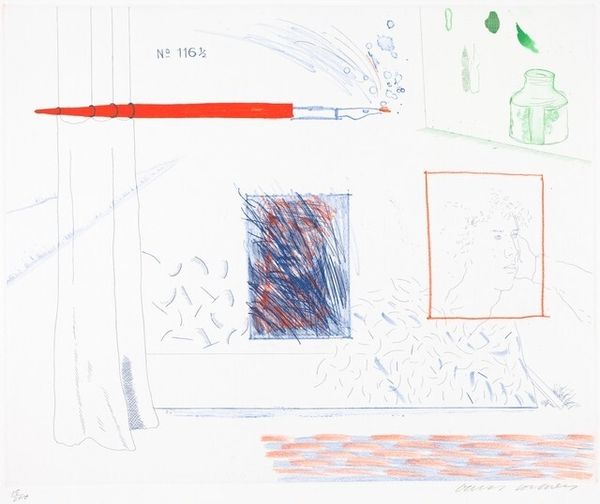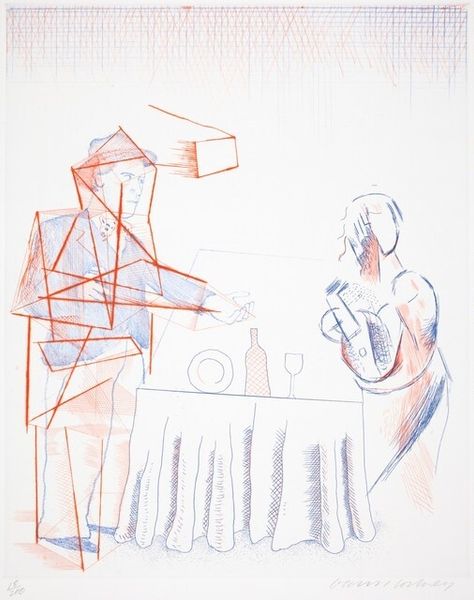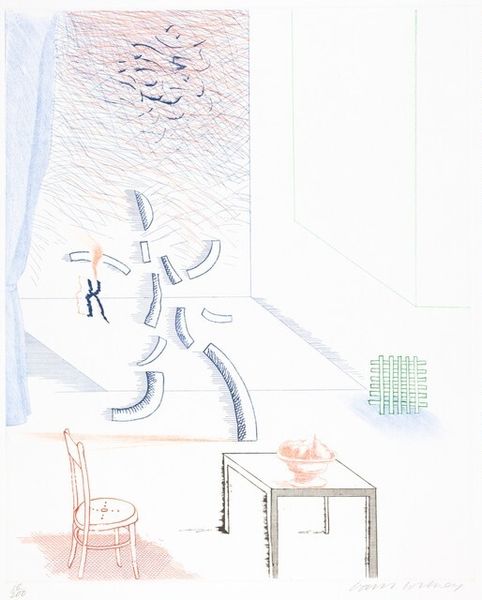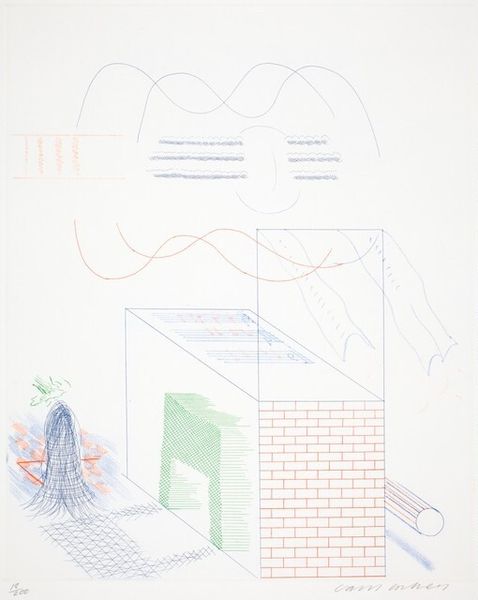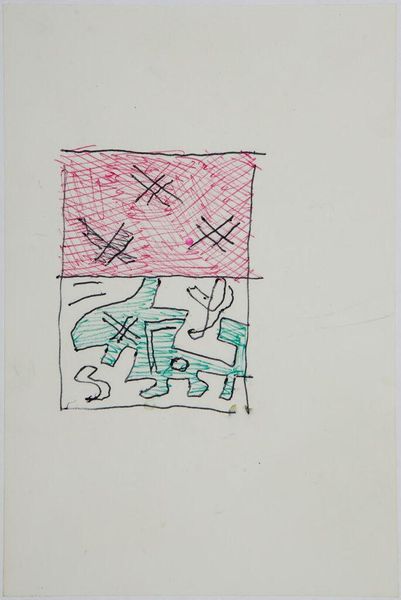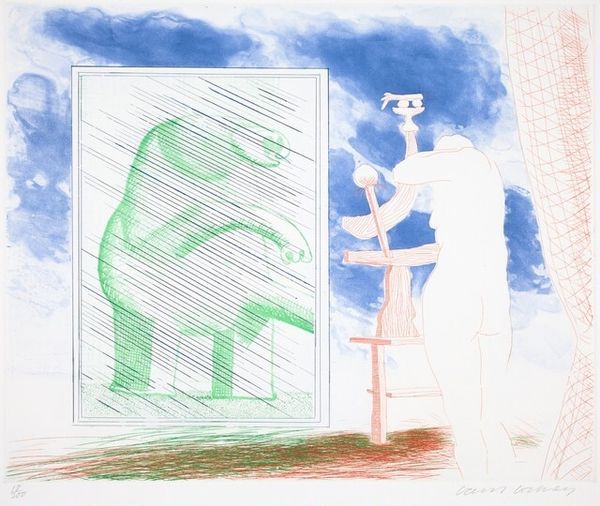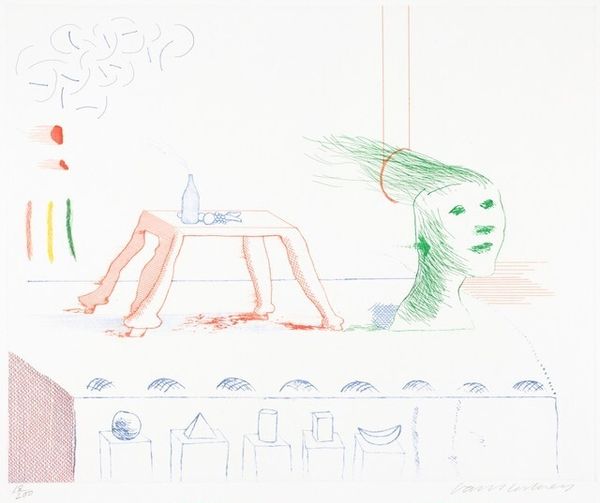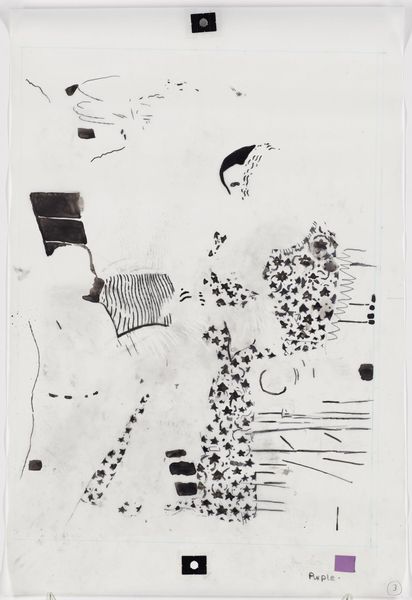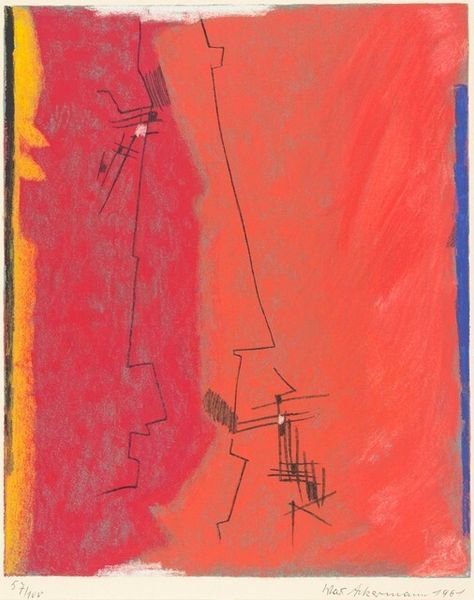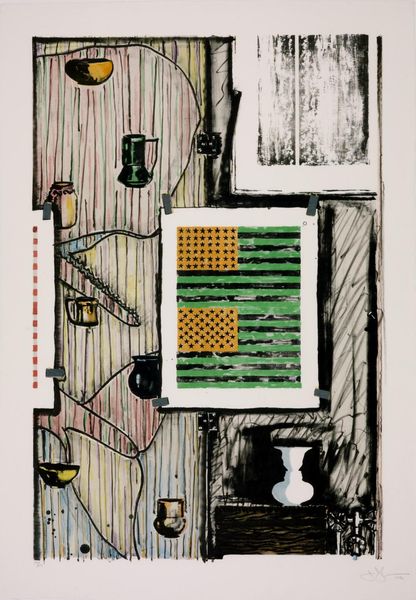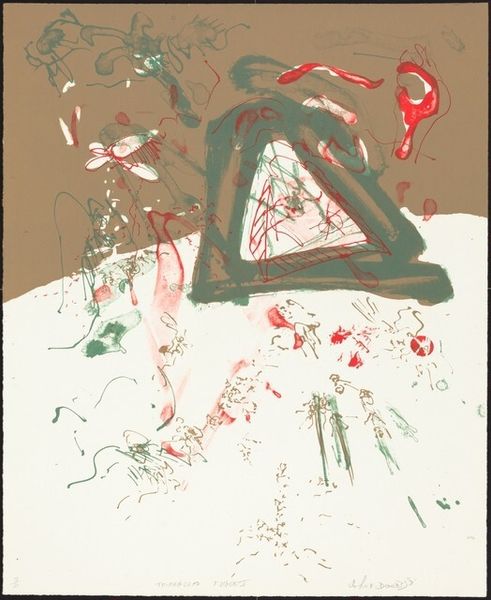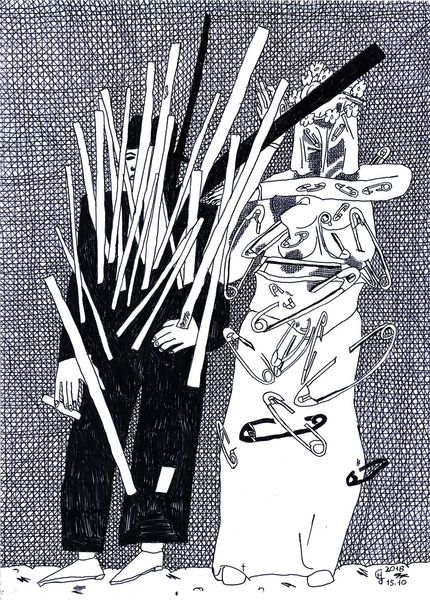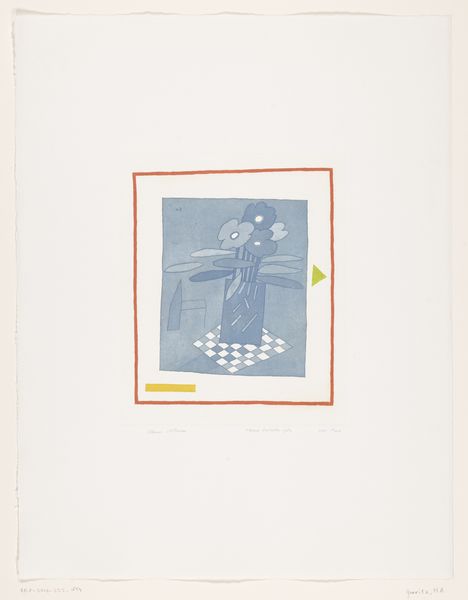
print, etching
#
cubism
# print
#
etching
#
etching
#
figuration
#
line
#
modernism
Dimensions: plate: 42.5 x 34.5 cm (16 3/4 x 13 9/16 in.) sheet: 52.6 x 46 cm (20 11/16 x 18 1/8 in.)
Copyright: National Gallery of Art: CC0 1.0
Curator: Welcome. Today we’ll be looking at David Hockney’s etching, Parade, dating from 1976-77. Editor: Well, immediately I'm struck by the feeling of something hand-wrought. You can almost see the pressure of the artist's hand guiding the tool across the plate. It seems deeply rooted in a manual process, almost folksy. Curator: The seemingly simple, linear construction belies a complex engagement with cubist principles, wouldn’t you say? Note the deconstruction of space and form. How does Hockney achieve depth without resorting to traditional perspective? Editor: Yes, but I’m more drawn to what’s materially presented, the final output here as an etching. I notice how much tonal variation he coaxes out through a laborious, iterative technique. You can sense him testing what is possible via each plate. What do the grid marks throughout this space imply for Hockney? Curator: That very grid emphasizes flatness. Observe how the represented objects – the guitarist, the ambiguous figures – are stylized and flattened, integrated into this very deliberate surface design. Look at the deliberate arrangement, this organization of abstract and recognizable forms within a definite, very shallow, picture plane. Editor: But even those formal, intentional considerations you raise have to also circle back around to what tools made all this possible, I think. The printed musical notation anchors us. Are we meant to imagine the sound implied in its manufacture? Perhaps as a conceptual grounding force or the inspiration of how this image eventually comes to being as it is? Curator: An interesting point, certainly. Consider, also, how Hockney challenges the traditional notions of representation by creating a visual syntax, a set of symbols to evoke the *idea* of a parade, rather than offering a mimetic depiction of an event. Editor: Well, and to reiterate: this visual syntax emerges materially and experientially in real time from these processes; from a plate meticulously worked, from the unique variations within printing, and, potentially, even with the kind of paper stock on offer at this time. The touch and smell considerations alone... it has a rich past, right? Curator: Indeed. Ultimately, “Parade” offers an intriguing glimpse into Hockney's aesthetic exploration of form and space. Editor: It leaves us with a tangible connection to its origins and production as a lasting cultural object.
Comments
No comments
Be the first to comment and join the conversation on the ultimate creative platform.
